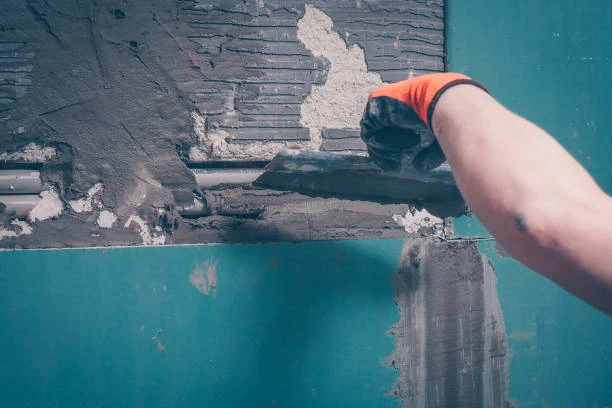Introduction
When it comes to plumbing materials, safety is a paramount concern for homeowners, contractors, and industries alike. Polypropylene Random Copolymer (PPR) pipes have emerged as a popular choice due to their durability and versatility. But the question remains: Is PPR Pipe safe? In this article, we’ll explore the safety aspects of PPR pipes, their benefits, potential risks, and how they stack up against other materials.
What is PPR Pipe?
Definition and Composition
PPR pipes are made from polypropylene, a type of plastic known for its strength and resistance to various chemicals. They are manufactured using a process that ensures the pipes are robust and lightweight, making them ideal for a range of applications.
Common Uses
PPR pipes are primarily used in plumbing systems for hot and cold water supply, as well as in industrial applications. Their resistance to corrosion and scaling makes them a preferred choice in many settings.
Health and Safety Standards
Regulatory Compliance
PPR pipes are subject to strict regulations that govern their use in plumbing applications. In many countries, they must meet standards set by organizations such as the American Society for Testing and Materials (ASTM) and the International Organization for Standardization (ISO).
Certification Bodies
Various certification bodies ensure that PPR pipes are safe for use. These include NSF International and the Water Quality Association, which test and verify that these pipes do not leach harmful chemicals into drinking water.
Advantages of PPR Pipes
Chemical Resistance
One of the standout features of PPR pipes is their resistance to a wide range of chemicals, making them suitable for various applications without the risk of contamination.
Low Toxicity
PPR pipes are generally considered non-toxic, which means they don’t release harmful substances into the water they transport. This quality makes them a safe option for drinking water systems.
Durability and Longevity
PPR pipes are known for their durability, often lasting for over 50 years with proper care. Their robustness reduces the need for frequent replacements, further enhancing their safety profile.
Potential Risks and Concerns
Environmental Impact
While PPR pipes are recyclable, concerns about plastic waste in the environment persist. The proper disposal and recycling of PPR pipes are essential to mitigate any negative impact.
Manufacturing Process Concerns
The production of PPR pipes can involve the use of additives and stabilizers. It’s crucial to ensure these substances meet safety standards to prevent any adverse effects.
Heat Resistance
PPR pipes have a maximum service temperature, typically around 80°C (176°F). Exceeding this temperature can compromise their integrity, so it’s essential to use them within the recommended limits.

PPR Pipes vs. Other Materials
Comparison with PVC
While PVC pipes are widely used, they can release harmful substances when exposed to heat. In contrast, PPR pipes maintain their safety profile even in higher temperatures, making them a safer choice for many applications.
Comparison with Metal Pipes
Metal pipes can corrode over time, leading to contamination of the water supply. PPR pipes, being non-corrosive, eliminate this risk, providing a safer alternative for plumbing systems.
Installation Considerations
Proper Installation Techniques
To ensure the safety and longevity of PPR pipes, proper installation techniques must be followed. This includes using the correct fittings and ensuring airtight joints.
Common Mistakes to Avoid
Avoiding mistakes such as overheating the pipe during welding or using incompatible materials can significantly enhance the safety and performance of PPR piping systems.
Maintenance of PPR Pipes
Regular Inspections
Conducting regular inspections of PPR pipes can help identify potential issues before they become major problems. Look for signs of wear, leaks, or damage.
Cleaning Recommendations
Keeping PPR pipes clean is crucial for maintaining water quality. Regular flushing and using non-abrasive cleaning solutions can help preserve their integrity.
Future Trends in PPR Pipe Manufacturing
Innovations for Safety
As technology advances, manufacturers are exploring new ways to enhance the safety and performance of PPR pipes, including the development of additives that improve their properties.
Eco-Friendly Developments
The trend towards sustainability is leading to innovations in PPR pipe production, focusing on reducing environmental impact and improving recyclability.
Conclusion
In summary, PPR Pipe are a safe and reliable choice for plumbing applications. Their durability, chemical resistance, and low toxicity make them ideal for various uses, including drinking water systems. By adhering to proper installation and maintenance practices, you can ensure that PPR pipes provide long-lasting safety and performance.
FAQs
Are PPR pipes safe for drinking water?
Yes, PPR pipes are generally considered safe for drinking water as they do not leach harmful substances.
How long do PPR pipes last?
PPR pipes can last over 50 years with proper installation and maintenance.
Can PPR pipes withstand high temperatures?
PPR pipes can withstand temperatures up to about 80°C (176°F) but should not be exposed to higher temperatures.
What are the environmental impacts of PPR pipes?
While PPR pipes are recyclable, improper disposal can contribute to plastic waste. It’s essential to recycle them correctly.
How do PPR pipes compare in safety to other piping materials?
PPR pipes are generally safer than PVC and metal pipes, as they do not corrode and release harmful substances.


















